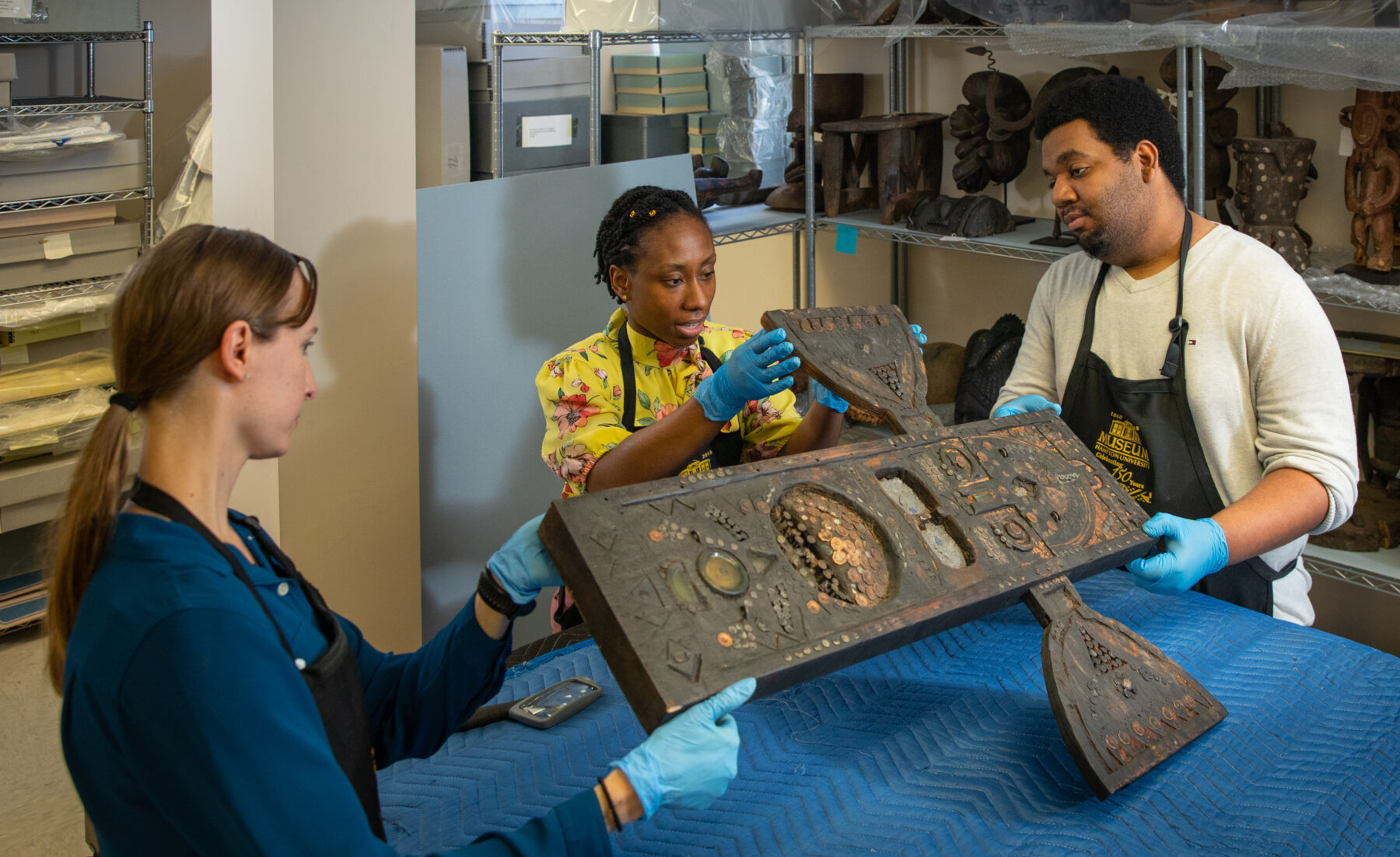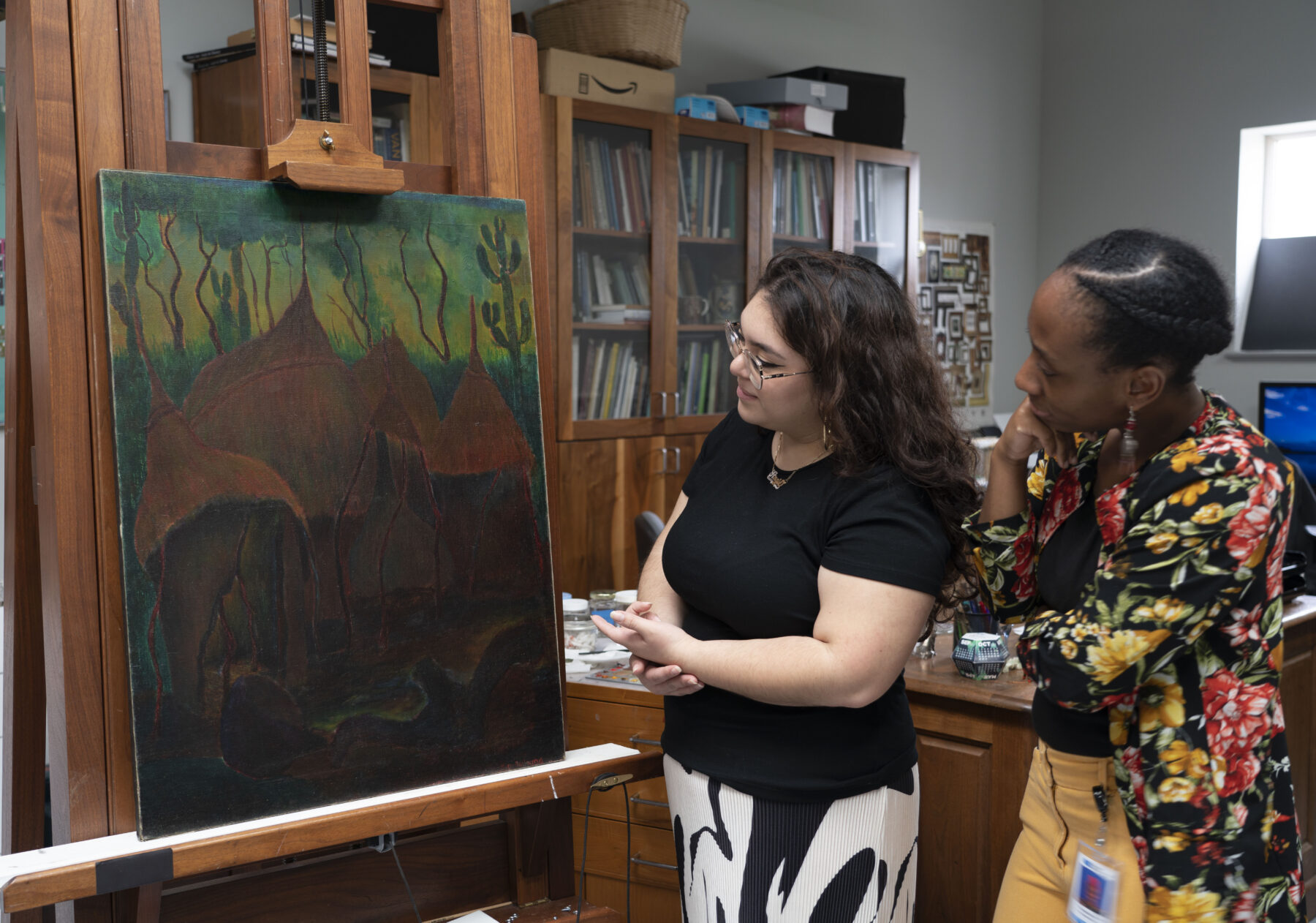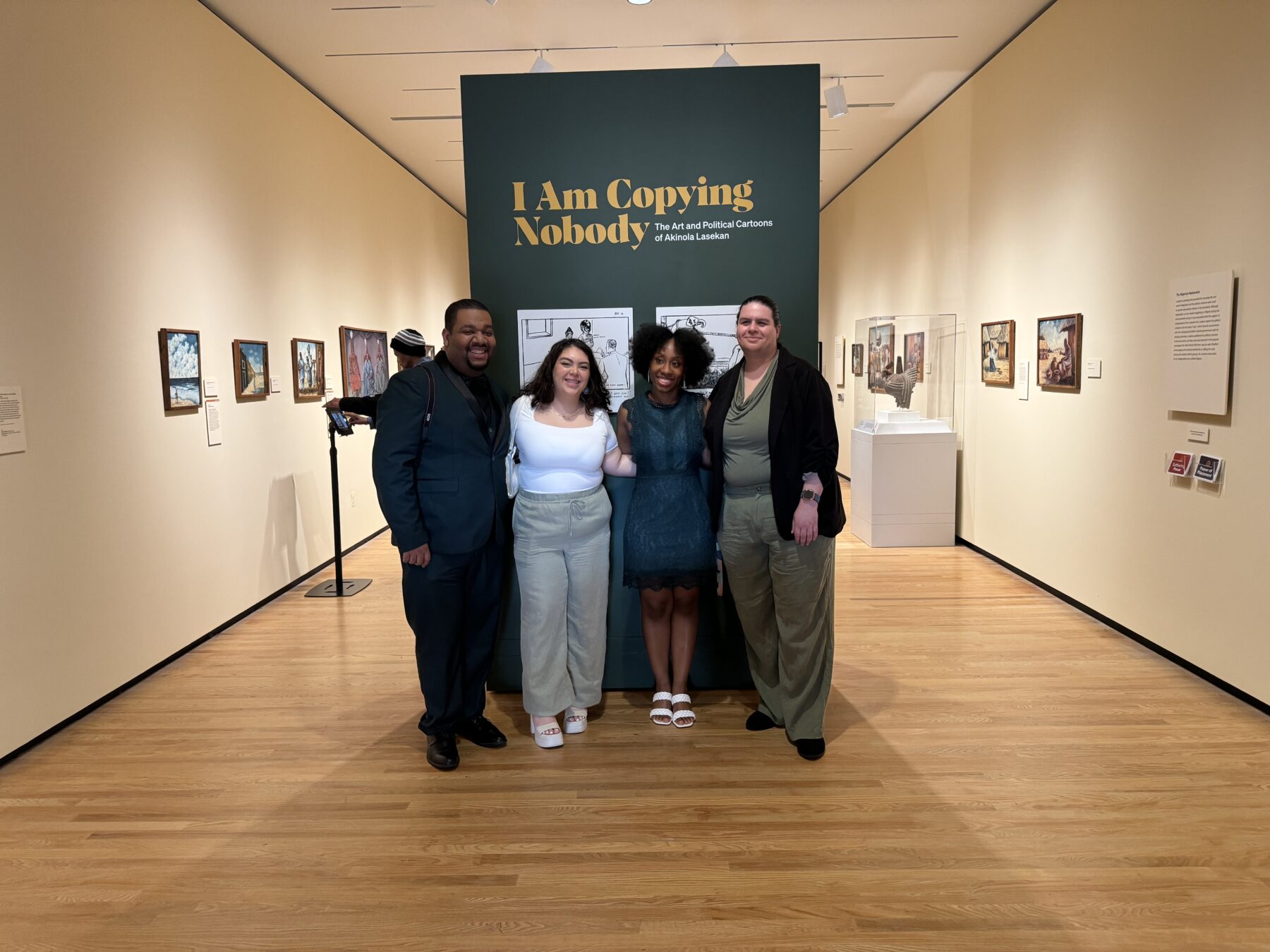Our Adventures in Music City

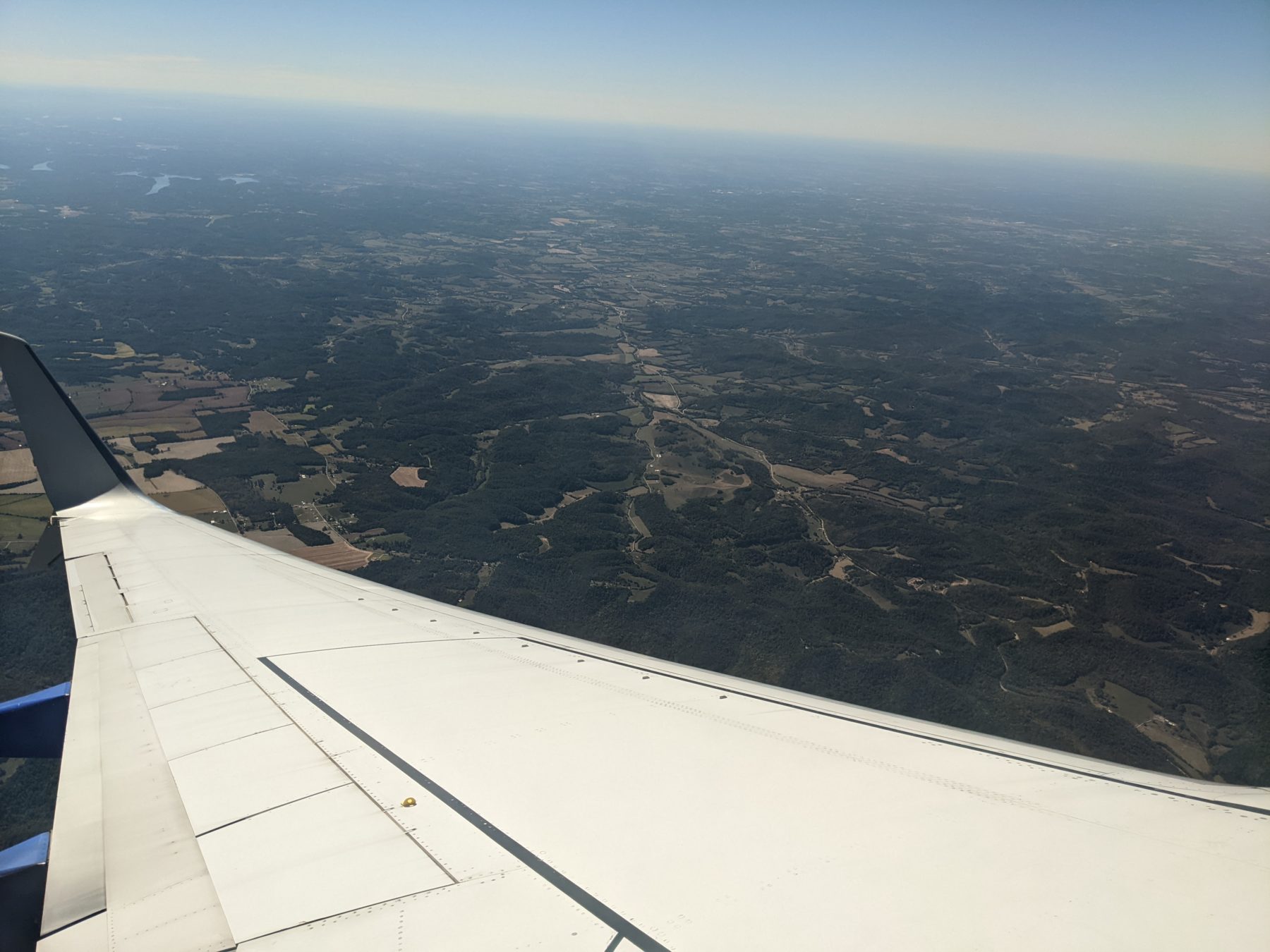
On October 5th, we headed to Music City, otherwise known as Nashville, Tennessee, for the exhibition opening of African Modernism in America at Fisk University Galleries. The exhibition was curated by Perrin Lathrop, Assistant Curator of African Art at the Princeton University Art Museum; Nikoo Paydar, former Associate Curator, Fisk University Galleries; and Jamaal Sheats, Director and Curator, Fisk University Galleries. While in Nashville, we also visited the Frist Art Museum and viewed three exhibitions: Weaving Splendor: Treasures of Asian Textile from the Nelson-Atkins Museum of Art, Virginia Overton: Saved, and Knights in Armor. In this post we will be taking you through some of the exhibitions and artworks we saw in Music City!
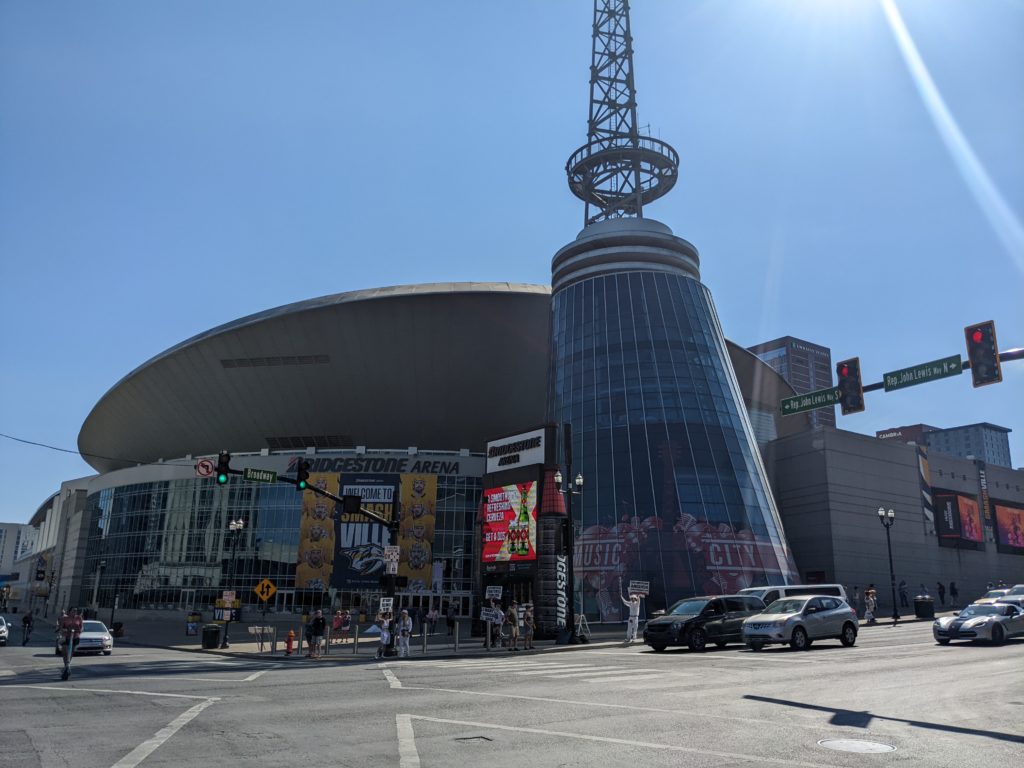
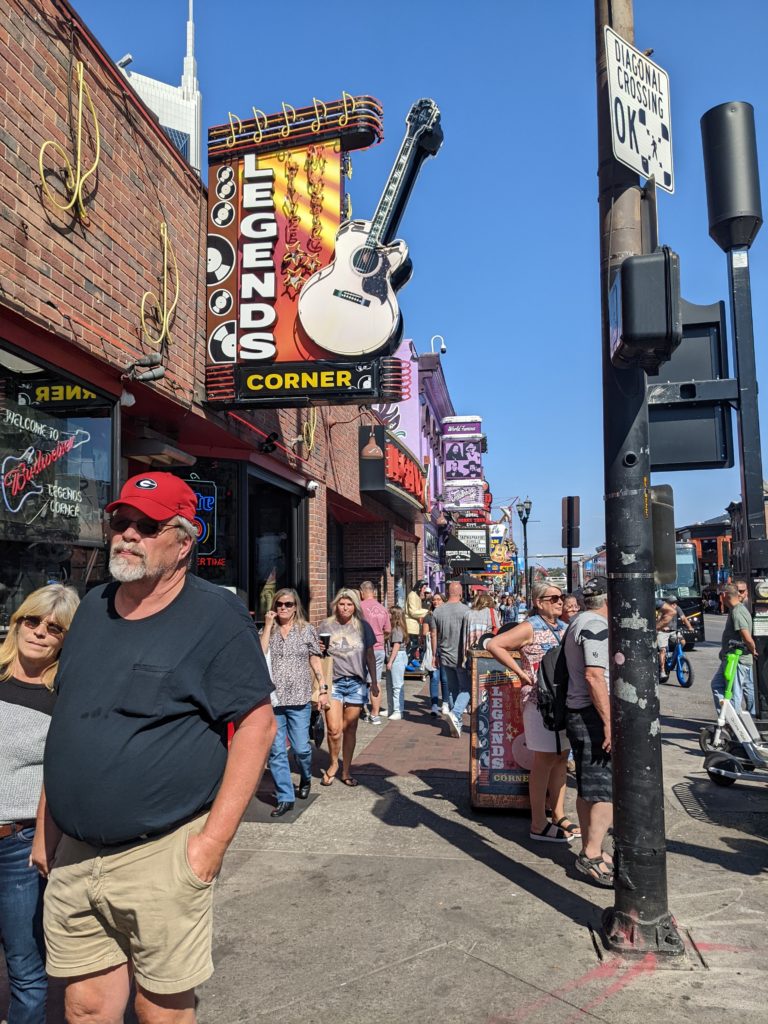
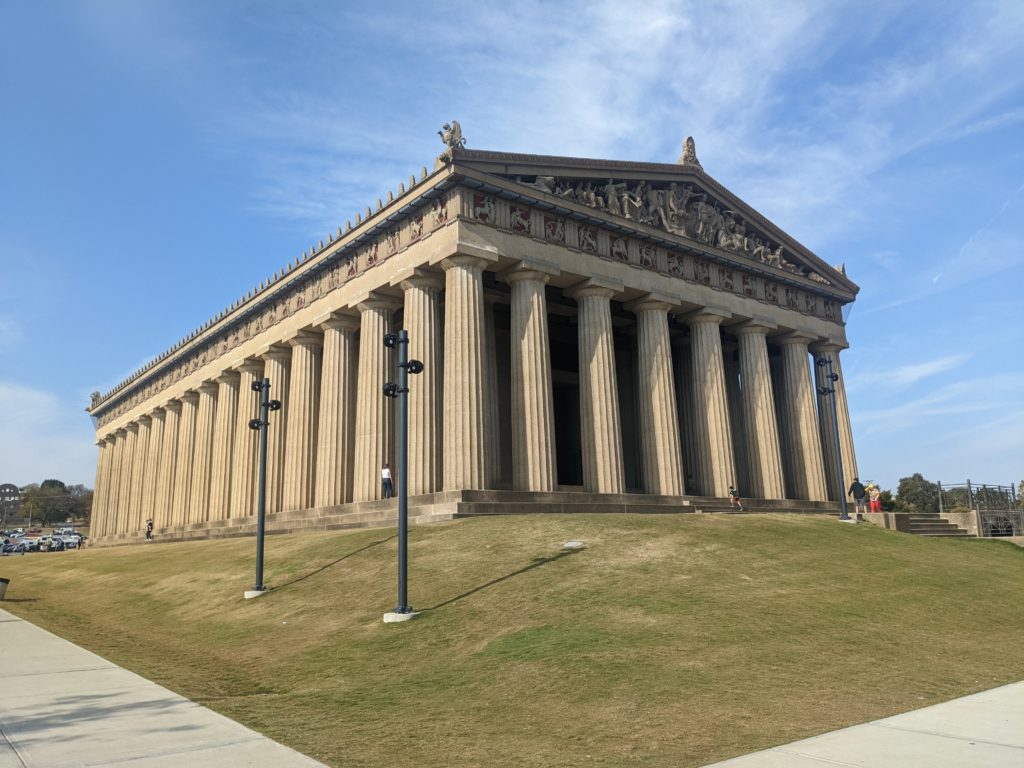
From Art Deco to Asian Textiles at the Frist Art Museum
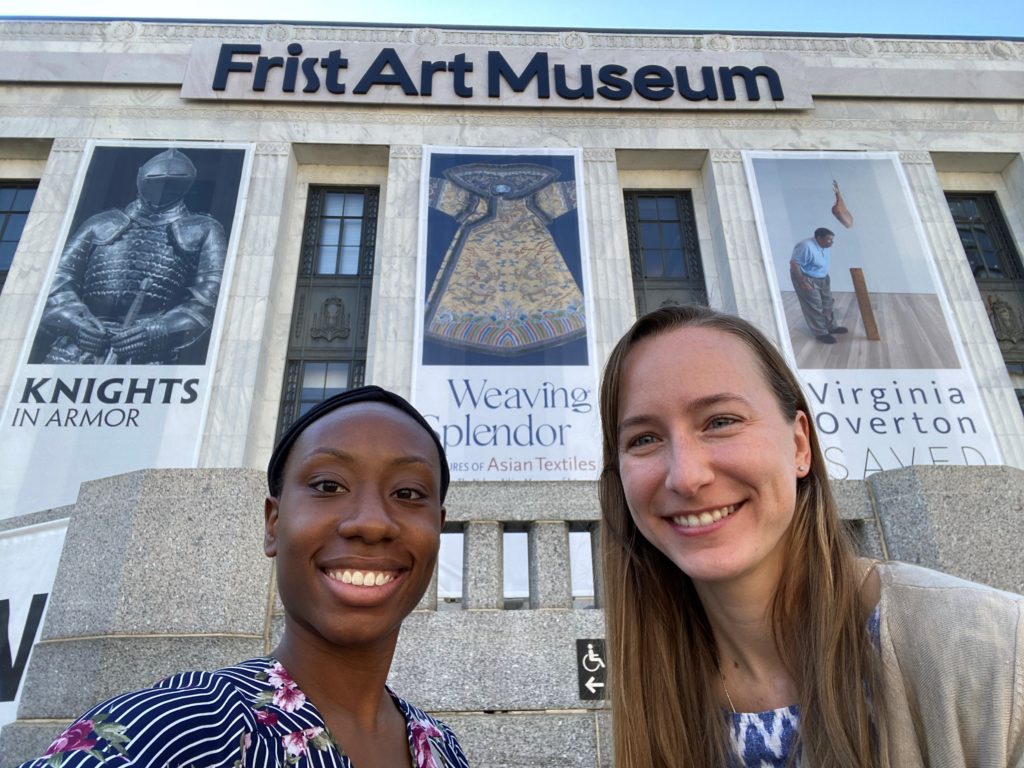
Our first stop on our trip took us to the Frist Art Museum to preview the opening of two exhibitions, Weaving Splendor: Treasures of Asian Textile from the Nelson-Atkins Museum of Art and Virginia Overton: Saved. The Executive Director and CEO of the Frist, Seth Feman, was kind enough to allow us to join the press preview for these exhibitions. While waiting for the press preview to begin, we marveled at the museum’s Art Deco architecture. The museum is located in a historic U.S. Post Office which was built in the 1930s. The post office was crafted in the Art Deco style with sleek steel bars in repeating geometric shapes lining the interior hallways. These former post office grates are unique because they also include images of boats, gears, trains, ships, and more, which represent the American transportation industry.

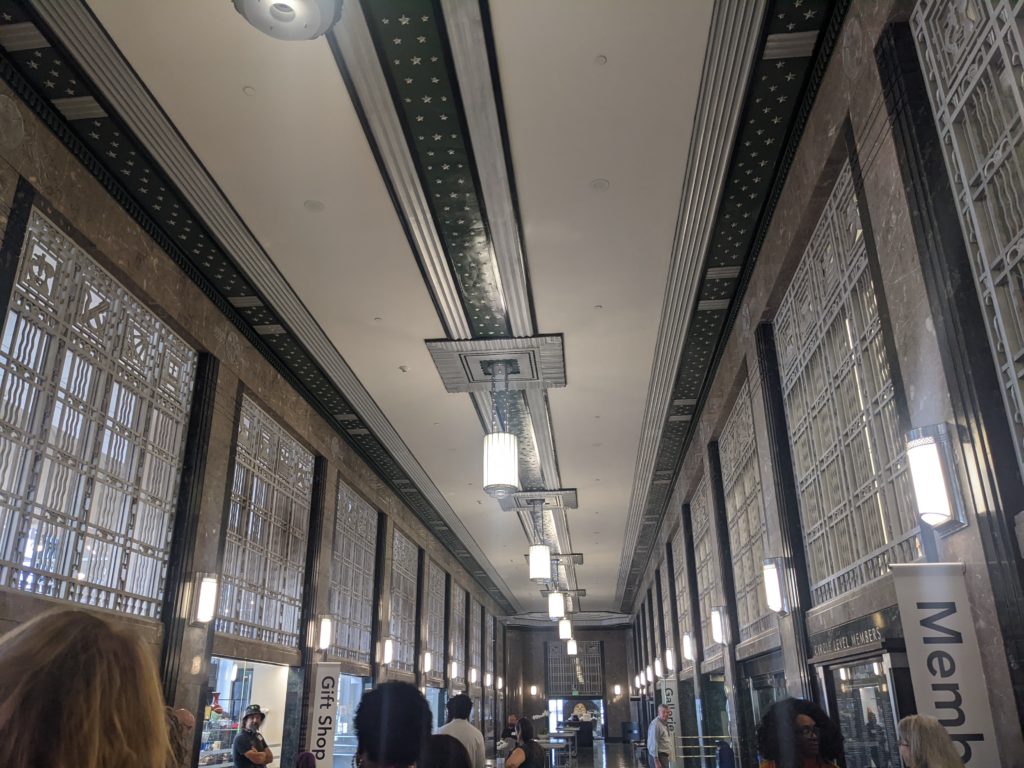
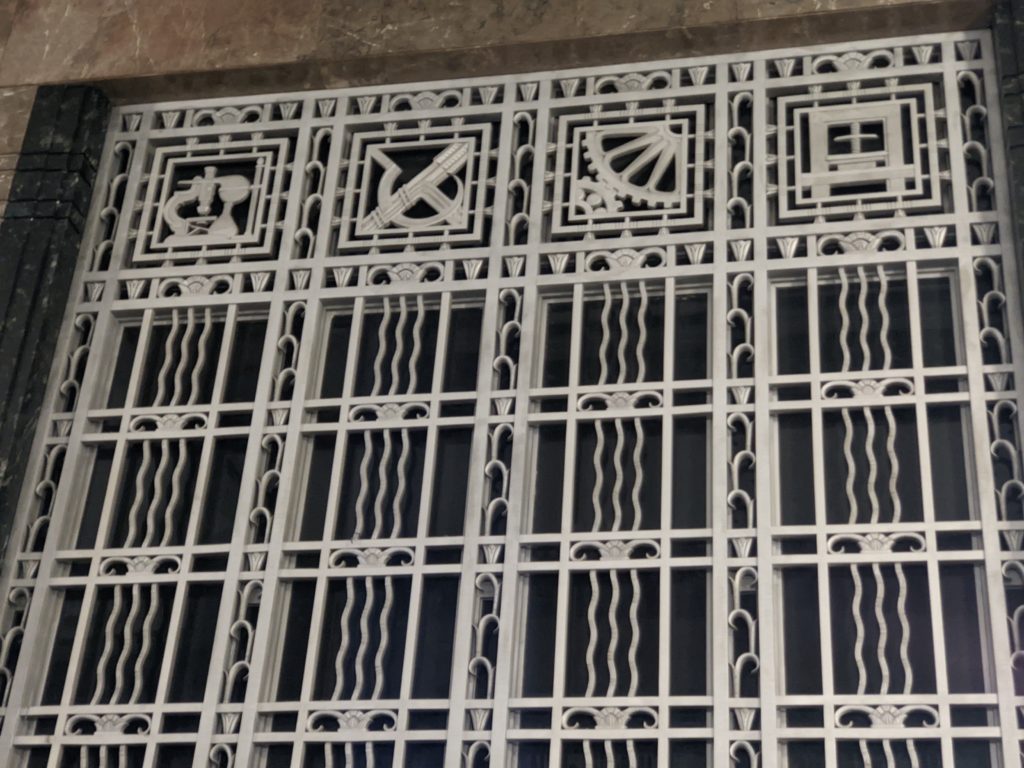
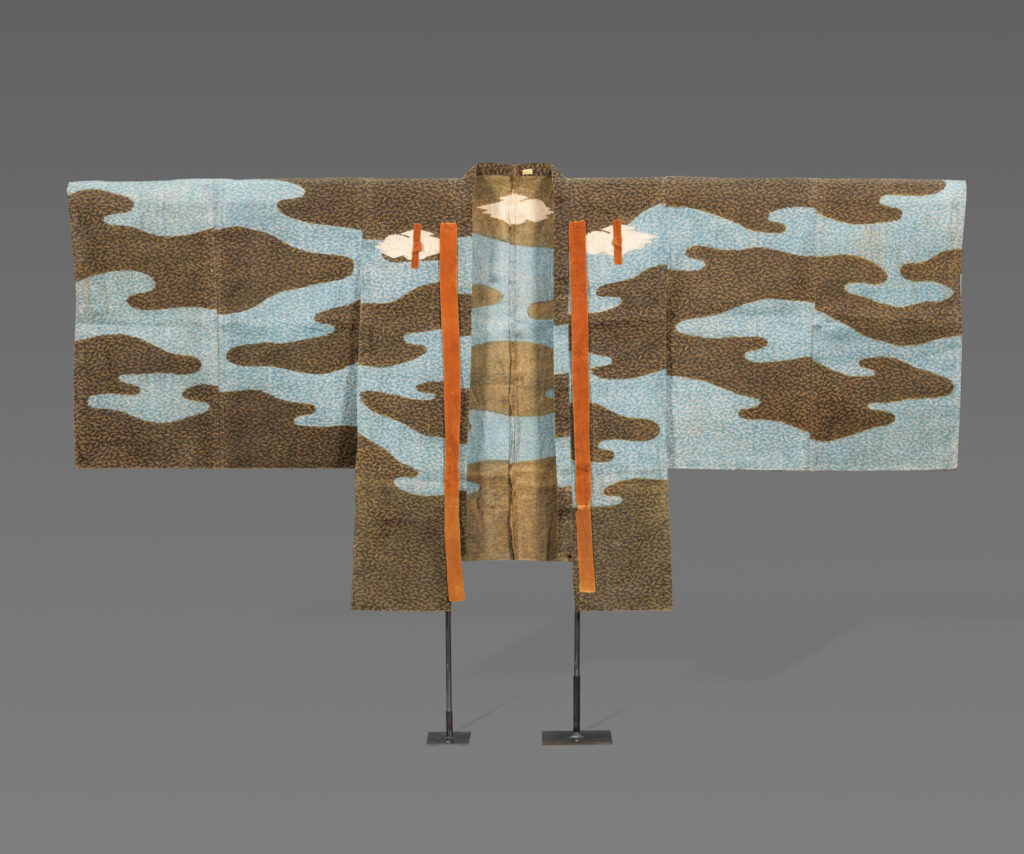
The press preview started with the exhibition, Weaving Splendor: Treasures of Asian Textile from the Nelson-Atkins Museum of Art, which focuses on Chinese, Indian, Japanese, Persian, and Turkish textiles from the collection of The Nelson-Atkins Museum of Art. The special treat during the preview was the tour given by three curators from The Nelson-Atkins Museum of Art. In the galleries, we saw Japanese theater costumes such as the Kyogen costume which is woven from bast fiber with stencil dyeing on top. We also viewed examples of Persian rugs and textiles made for Chinese royalty. Ling-en Lu, Curator of Chinese Art; Yoyoi Shinoda, Assistant Curator of Japanese Art and Kimberly Masteller; Jean McCray Beals Curator of South and Southeast Asian Art, gave a fantastic tour that gave significant insight into the history, meaning, and usage of specific textiles.
At the end of the exhibition, there was a “talk back” wall that allowed visitors to respond to the question, “Think of where you come from, what you wear, or how you decorate your space. How do you use textiles to express who you are?” Visitors could write their response on a long, rectangular sheet of paper and “weave” it through a metal “textile” wall. We agreed that this was one of our favorite “talk back” walls because it included a weaving element from the exhibition and an aspect of community participation by allowing each visitor to add their own “thread” in order to make one complete textile. We can’t wait to see how it looks at the end of the exhibition!
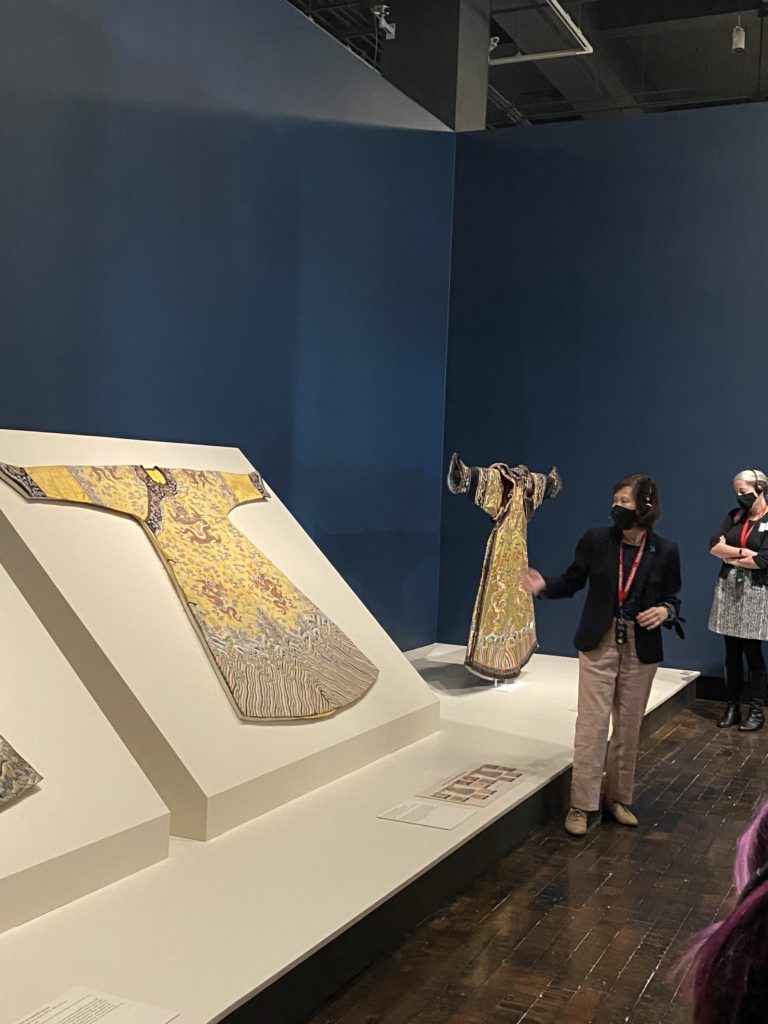
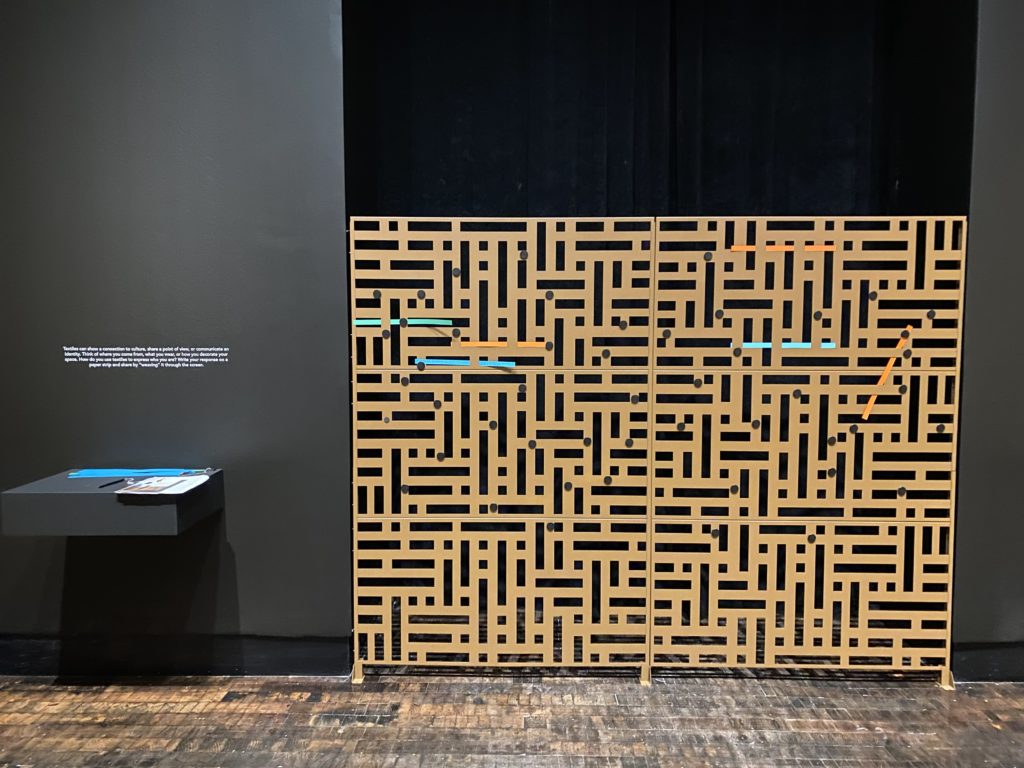
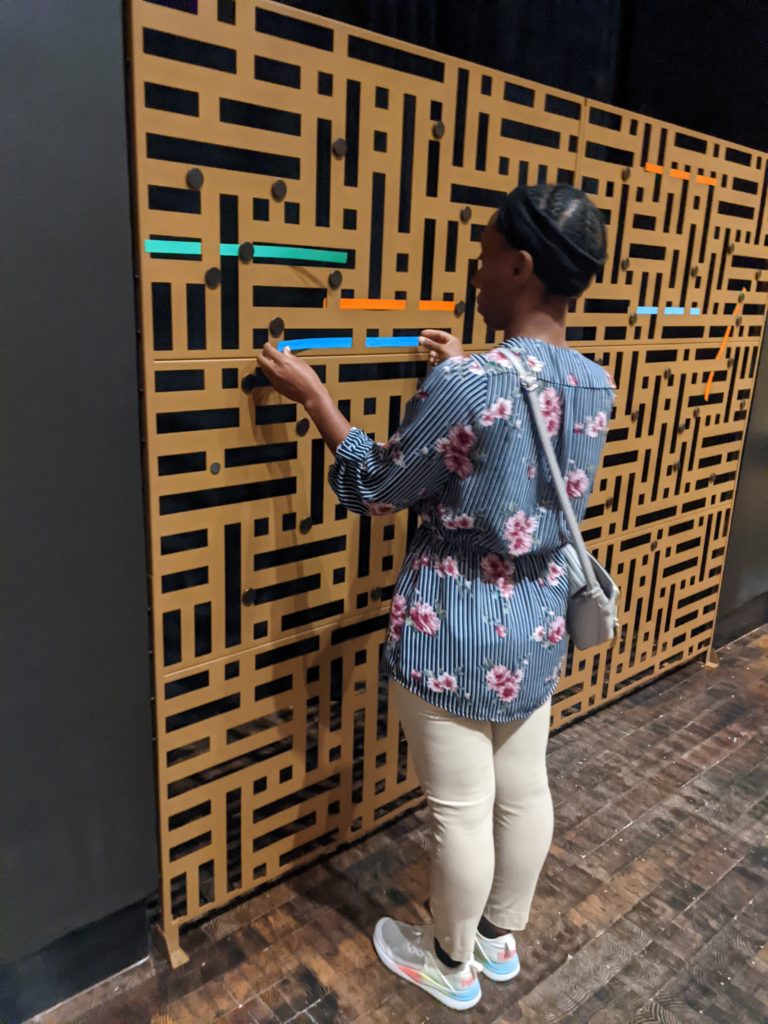
The next exhibition, Virginia Overton: Saved, displayed Overton’s skill of using salvaged materials to create new meaning with her art installations. The tour, which was led by Overton and Chief Curator of the Frist, Mark Scala, gave further insight into Overton’s creative process and artistic choices. One of Overton’s recent creations, Untitled (farm chime), included an interactive element. Hung from a steel frame were different types of metal objects that Overton had collected from her family’s farm. Visitors could touch and move the metal objects to produce sounds similar to a traditional wind chime. When viewing the clunky metal objects, we had some doubts that knocking the objects together would create a pleasant melody. However, we were pleasantly surprised when Overton began to run her hand across the metal objects; the sound that came from the installation sounded just like a chime!
Virginia Overton demonstrating her art installation Untitled (farm chime)
A Celebration of Modern African Art
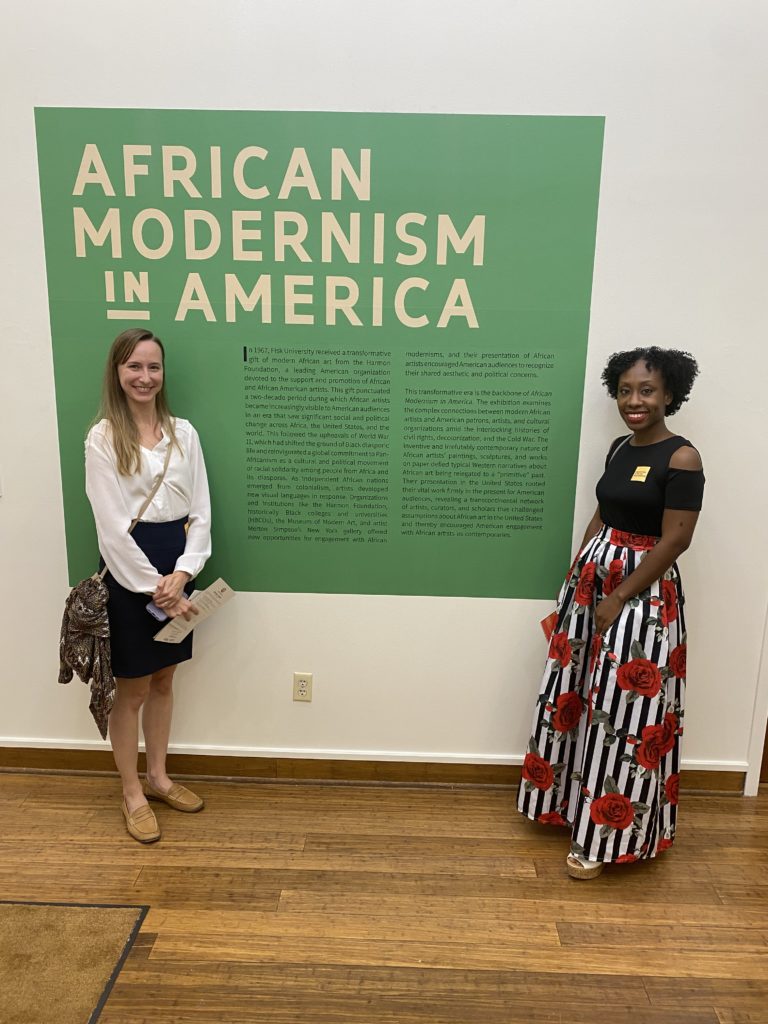
After the press preview at the Frist, we headed to Fisk University Galleries for the exhibition opening of African Modernism in America. When the Harmon Foundation closed in 1967, most of their collection went to Hampton University Museum and Fisk University Galleries. For us, this was a great opportunity to see the other half of the Modern African art collection that the Harmon Foundation had distributed to these two HBCUs.
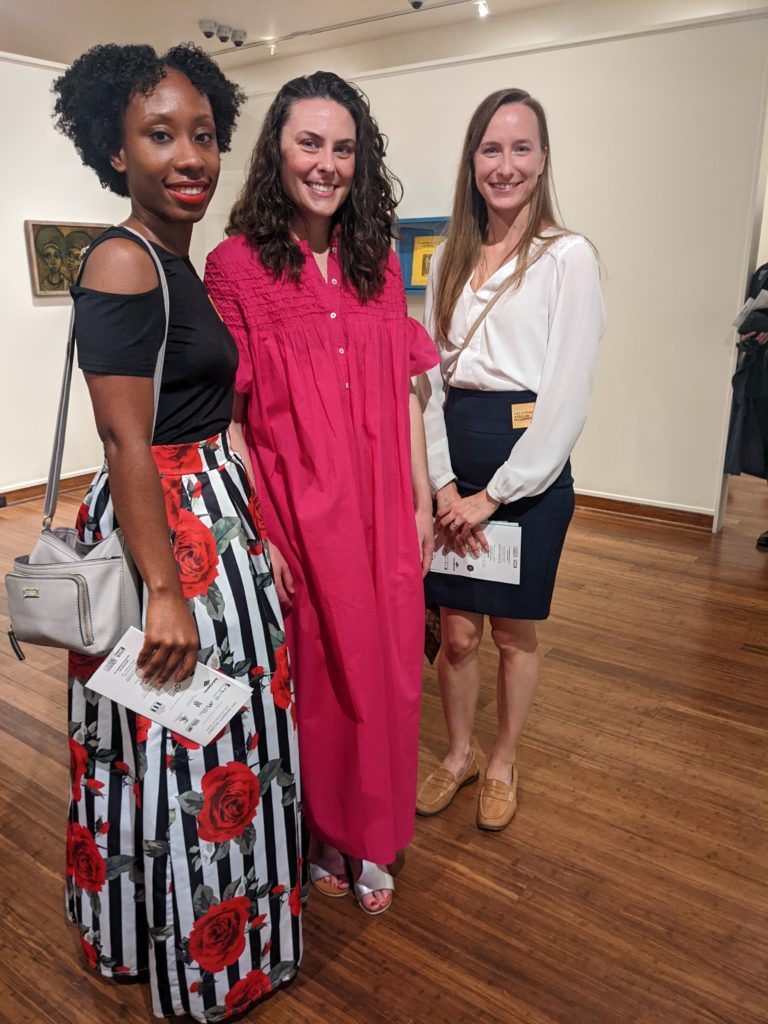
We had a wonderful time talking with Curator Perrin Lathrop, Registrar and Collections Manager, Christine Gostowski, and Director and Curator, Jamaal Sheats, about the exhibition process and the conservation of the Modern African Art collection. Of course, our favorite part was viewing the exhibition itself. The exhibition was broken up into several sections, “Art From Africa of Our Time”, “Modernism Between Africa and America”, “Fisk and Africa”, “Archiving African Modernism”, and “Modernism Within Africa”, which presented the connection between modern African artists and American patrons, artists, and cultural organizations during the time of civil rights, decolonization, and the Cold War. Artists on display included some of our favorites from Hampton’s collection: Akinola Lasekan, Manyolo Estella Betty, Peter Clarke, Ben Enwonwu, Afi Ekong, Emmanuel Owusu Dartey, Renee Bokoko, and John Biggers. There were several talented and enthusiastic Gallery Ambassadors (Fisk University students) positioned in different parts of the gallery ready to assist and give more information about specific artists and artworks. We could tell that the students knew tons of information and they even surprised us with information we did not know. Below are some examples of the artworks in the exhibition:
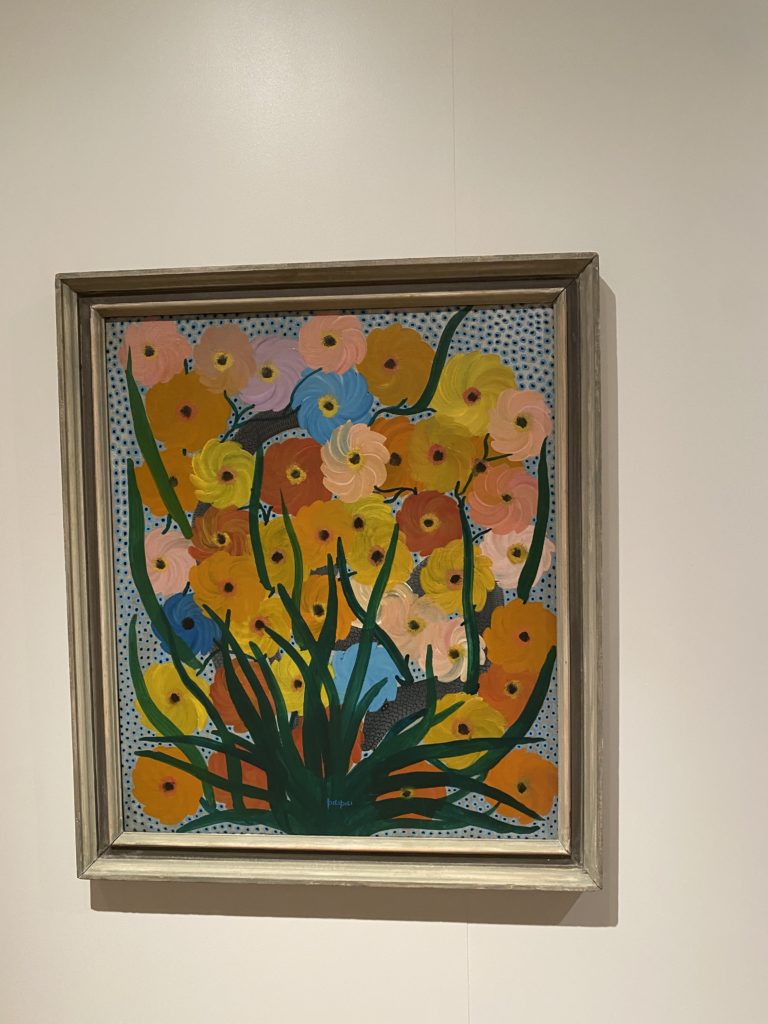
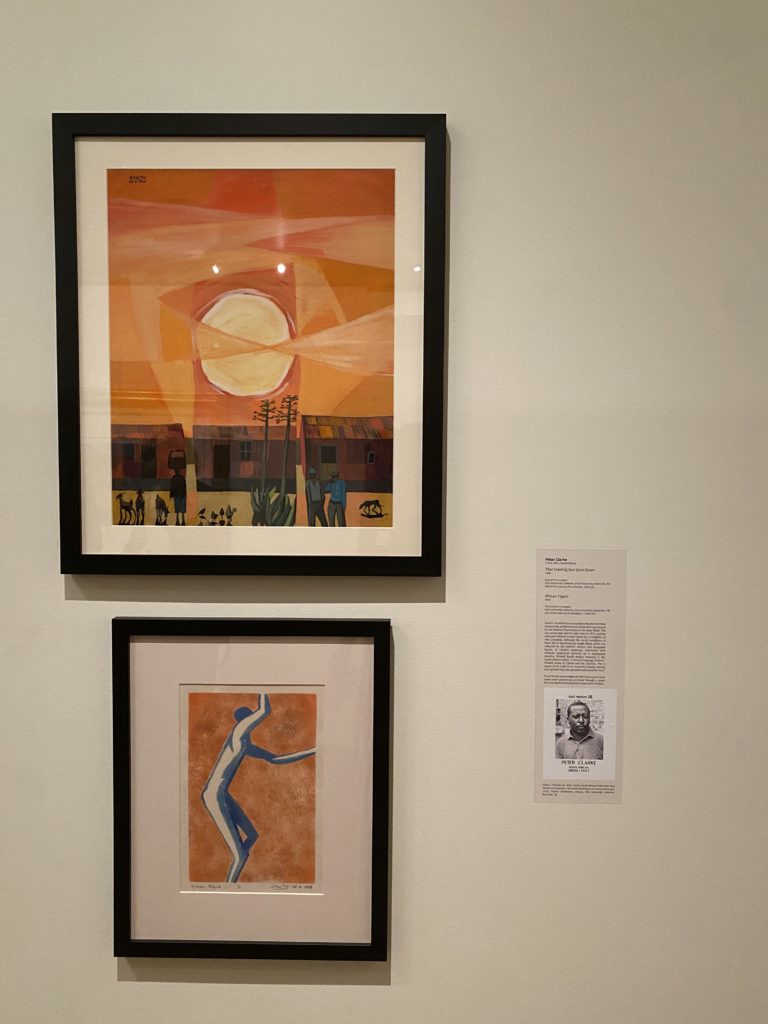
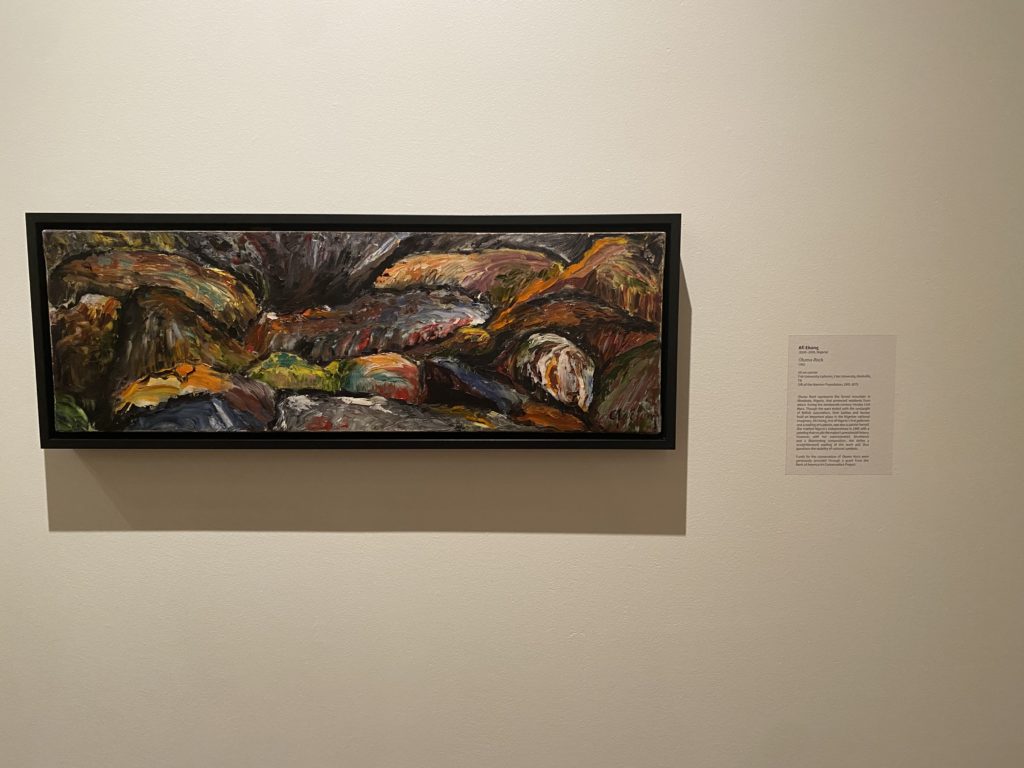
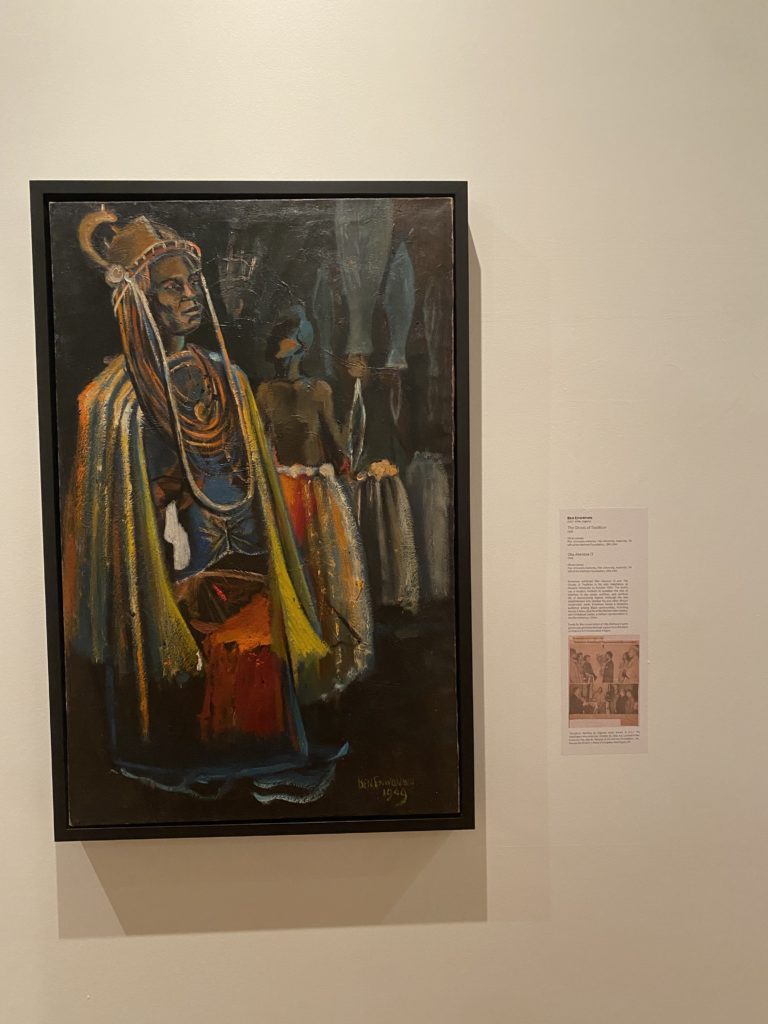
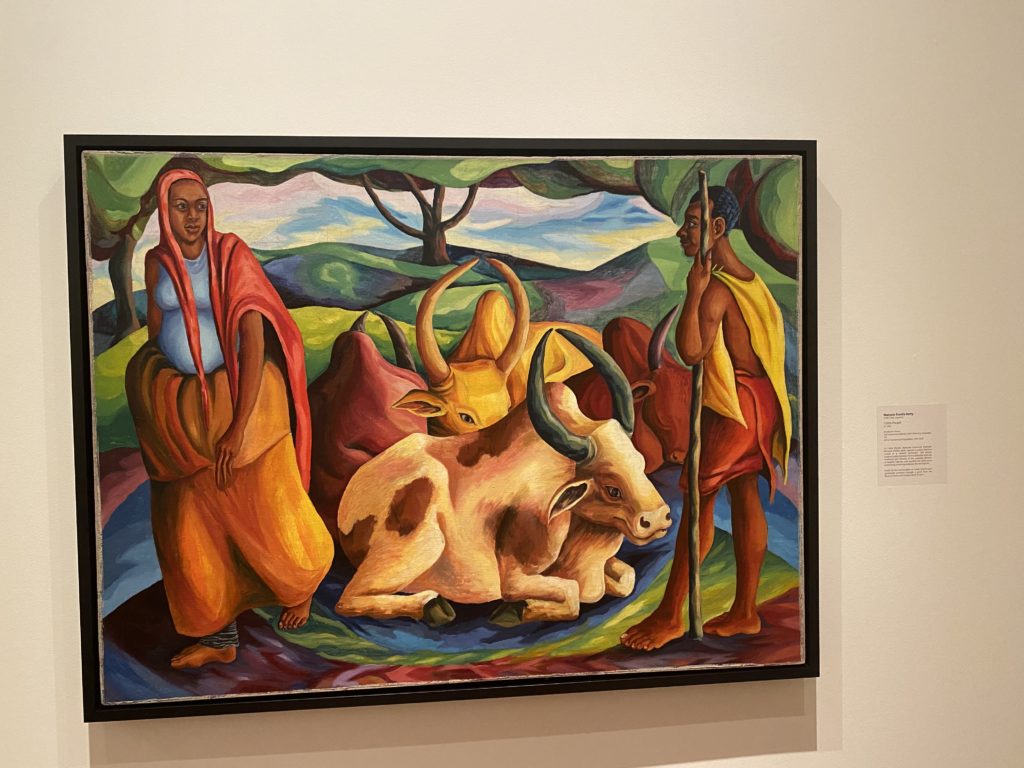
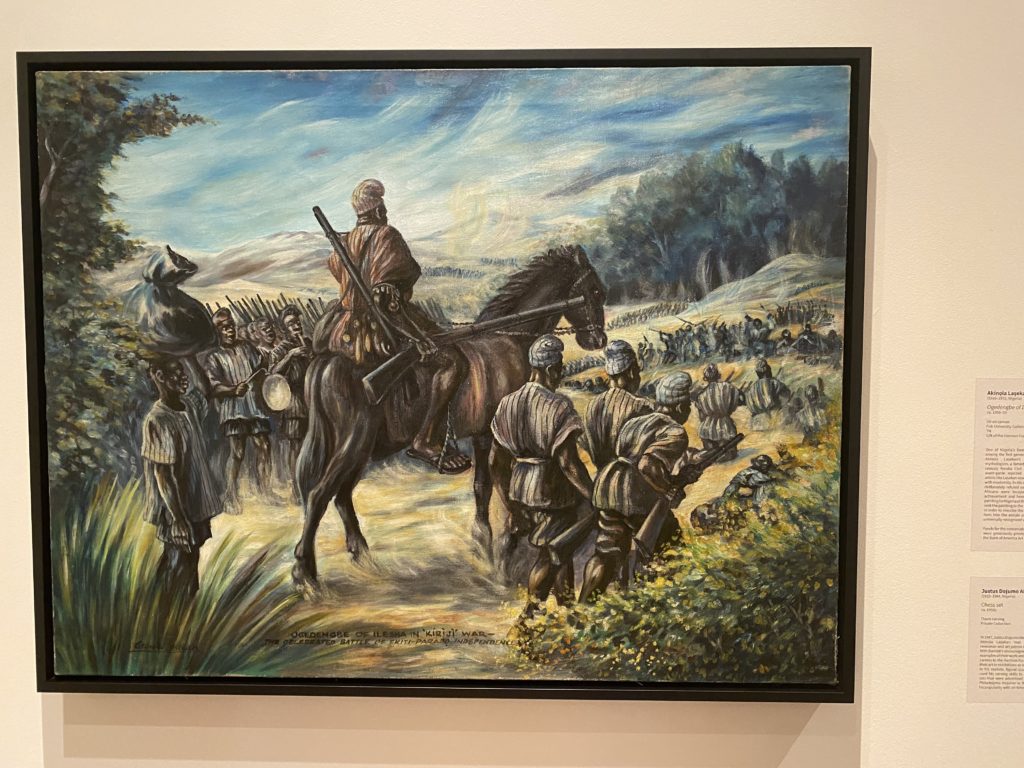
Although we were only in Nashville for a couple of days, it was filled with exceptional exhibitions, tons of art, and of course, great food! Thank you to the Frist Art Museum and Fisk University Galleries for allowing us to attend these wonderful exhibition openings. We left Nashville feeling inspired to complete our own exhibitions and conservation treatments.
Explore other articles like this
The Andrew W. Mellon Fellowship: Now and Beyond
In this post, I will highlight some of the accomplishments of this project and address two main takeaways that can help those looking to reproduce a similar fellowship program.
Art Spotlight: The Abandoned Hut by Mordecai Buluma
In this blog post Angie and Tashae discuss the symbolism behind The Abandoned Hut by Mordecai Buluma as well as the conservation treatment used to prepare it for exhibition.
Opening of I am Copying Nobody the Art and Political Cartoons of Akinola Lasekan
On April 13, 2024, I Am Copying Nobody: The Art and Political Cartoons of Akinola Lasekan opened at the Chrysler Museum of Art. Here are some highlights from the exhibition.
